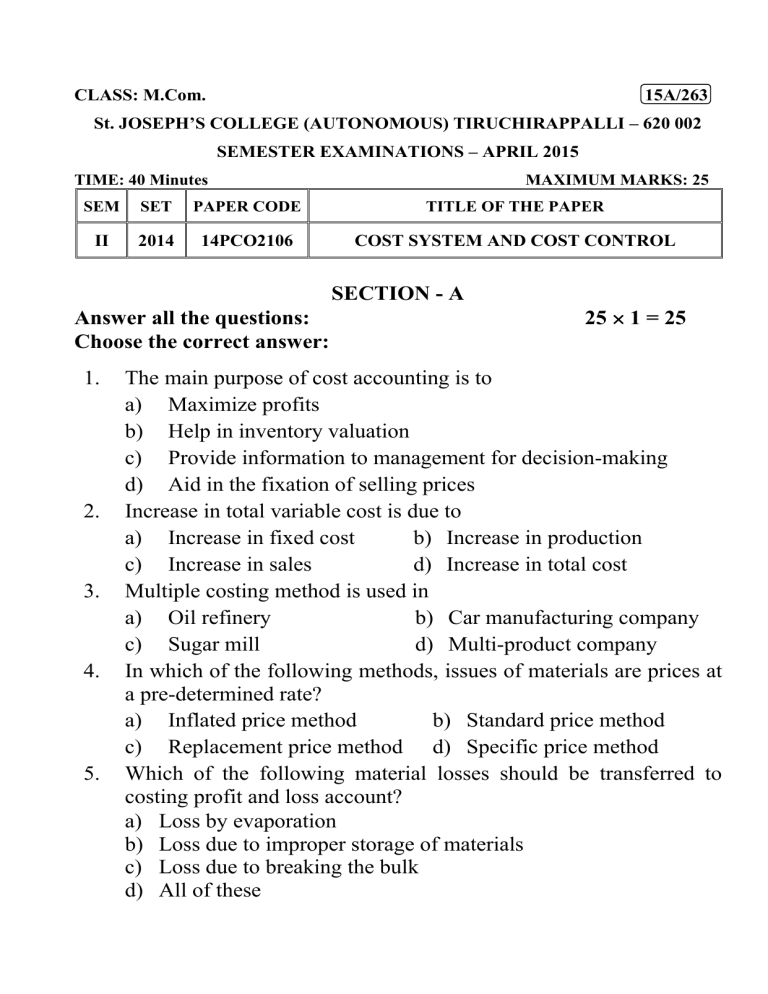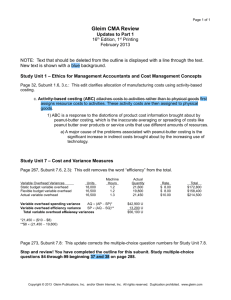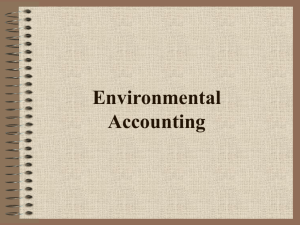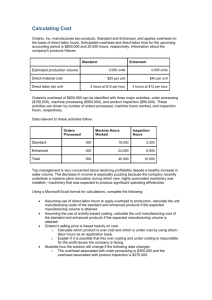263-SEC A - St.Joseph's College

CLASS: M.Com. 15A/263
St. JOSEPH’S COLLEGE (AUTONOMOUS) TIRUCHIRAPPALLI – 620 002
SEMESTER EXAMINATIONS – APRIL 2015
TIME: 40 Minutes
SEM SET PAPER CODE
MAXIMUM MARKS: 25
TITLE OF THE PAPER
II 2014 14PCO2106 COST SYSTEM AND COST CONTROL
SECTION - A
Answer all the questions: 25
1 = 25
Choose the correct answer:
1. The main purpose of cost accounting is to a) Maximize profits b) Help in inventory valuation c) Provide information to management for decision-making d) Aid in the fixation of selling prices
2. Increase in total variable cost is due to a) Increase in fixed cost b) Increase in production c) Increase in sales d) Increase in total cost
3. Multiple costing method is used in a) Oil refinery b) Car manufacturing company c) Sugar mill d) Multi-product company
4. In which of the following methods, issues of materials are prices at a pre-determined rate? a) Inflated price method b) Standard price method c) Replacement price method d) Specific price method
5. Which of the following material losses should be transferred to costing profit and loss account? a) Loss by evaporation b) Loss due to improper storage of materials c) Loss due to breaking the bulk d) All of these
6. 100 units are introduced in a process in which normal loss is 15 units. If actual output is also 100 units then there is a) No abnormal loss of abnormal gain b) An abnormal loss c) An abnormal gain d) None of these
7. An understatement of ending work-in-progress inventory will a) Understate cost of goods produced b) Understate net profit c) Overstate gross profit d) Overstate current assets
8. When units are lost at the end of the production process, the cost is charged to a) Factory overhead c) Selling expense b) Work-in-progress d) Completed units
9. A product which has practically no sales or utility value is a) Waste c) Scrap b) By product d) Spoilage
10. A method of apportionment of joint costs to various joint products on the basis of their respective capacities to bear joint costs is a) Sales value method b) Physical units method c) Average cost method d) Marginal cost and contribution method
11. The cost of a product as determined under standard cost system is a) Fixed cost b) Direct cost c) Historical cost d) Pre-determined cost
12. One purpose of standard costs may be described as a) Promoting and measuring performance b) Setting cost of manufacture c) Controlling and reducing cost d) Simplifying production operations
13. Overhead cost variance is the difference between a) Actual overhead and budgeted overhead b) Absorbed overhead and budgeted overhead
c) Absorbed overhead and actual overhead d) Actual overhead and standard overhead
14. If standard hours are 400 @ Re. 1 per hour and actual hours are
380 @ ` 1.25 per hour the labour rate variance is a)
` 20 (Favourable) b) ` 100 (Adverse) c) ` 25 (Favourable) d) ` 95 (Adverse)
15. Which of the following variance is always adverse a) Sales margin mix variance b) Fixed overhead capacity variance c) Calendar variance d) None of these
16. Fixed overhead expenditure variance is the difference between a) Budgeted overhead and actual overhead b) Standard overhead and actual overhead c) Absorbed overhead and budgeted overhead d) Absorbed overhead and standard overhead
17. Product costs under marginal costing include a) Price costs only b) Prime costs and variable overhead c) Prime costs and fixed overhead d) Material cost and variable overhead
18. One of the primary difference between marginal costing and absorption costing is regarding the treatments of a) Direct materials b) Fixed overheads c) Variable overheads d) Prime cost
19. Profit shown by absorption costing will tend to exceed profit shown by marginal costing method if a) Units produced exceed unit sold b) Variable manufacturing costs decrease c) Units sold exceeds units produced d) Fixed manufacturing costs decrease
20. Under the marginal costing concept, unit product cost would most likely be increased by a) A decrease in number of units produced b) An increase in the number of units produced c) An increase in the commission paid to salesman for each unit sold d) An increase in the remaining useful life of factory machinery depreciated on written down value method
21. When fixed cost is ` 10,000 and P/v ratio is 50% the breakeven point will be a) ` 20,000 c) ` 40,000 b) ` 50,000 d) None of these
22. In a job cost system, costs are accumulated a) By specific job b) By departmenta or process c) By kind of material used d) On a monthly basis
23. Most of the expenses are direct in a) Job costing c) Batch costing b) Contract costing d) All of these
24. The type of variance not computed for factory overhead is
______. a) Controllable b) Equivalent production c) Volume d) Idle capacity
25. Controllable variances are best disposed of by transferring to a) Cost of goods sold b) Inventories of work-in progress and finished good c) Cost of goods sold and inventories d) Costing profit and loss a/c
*************







